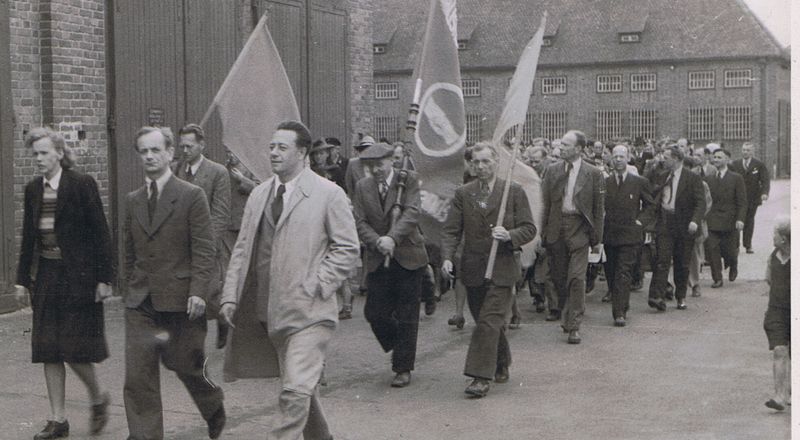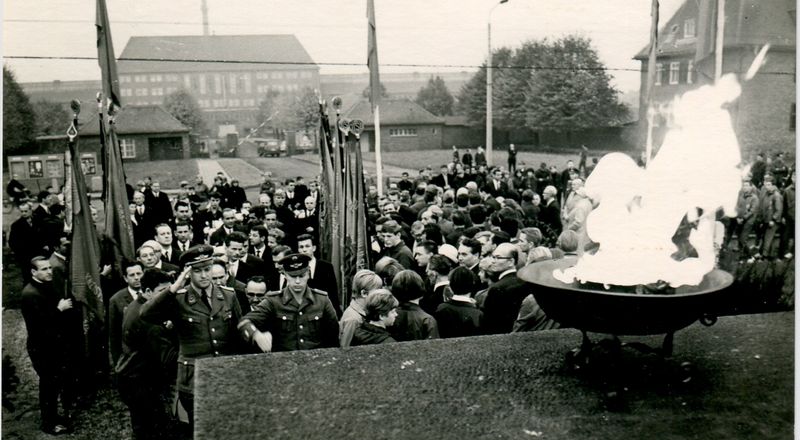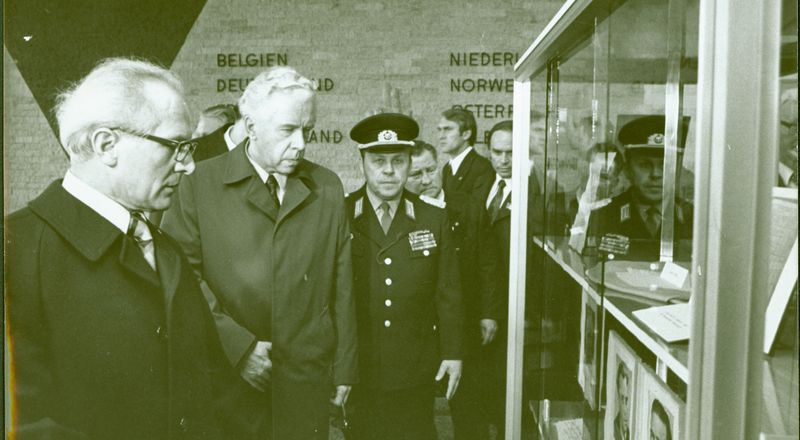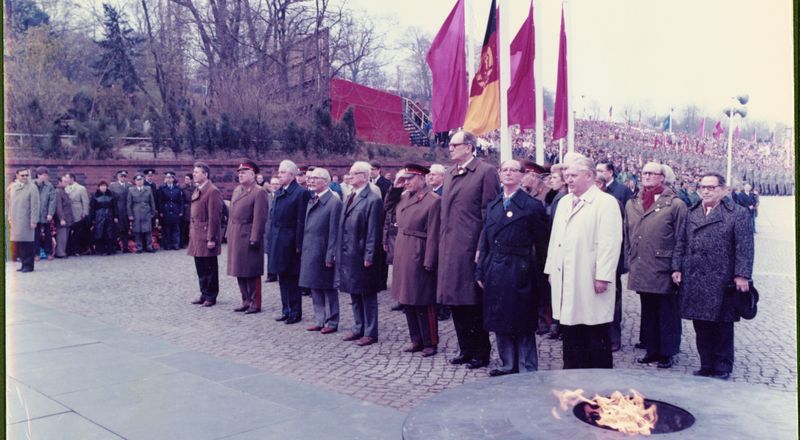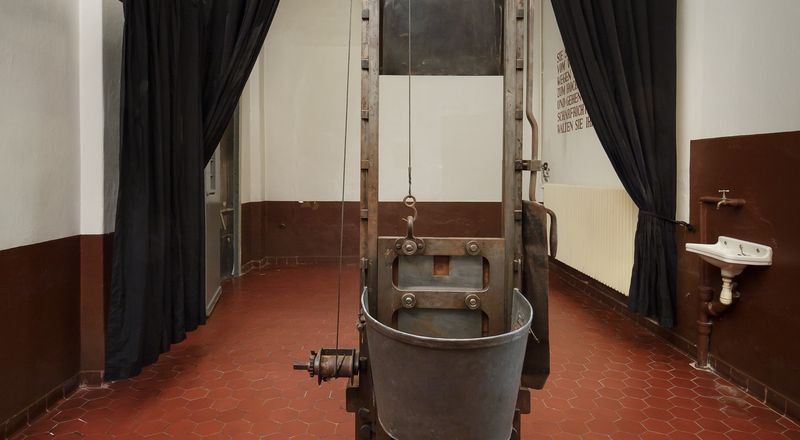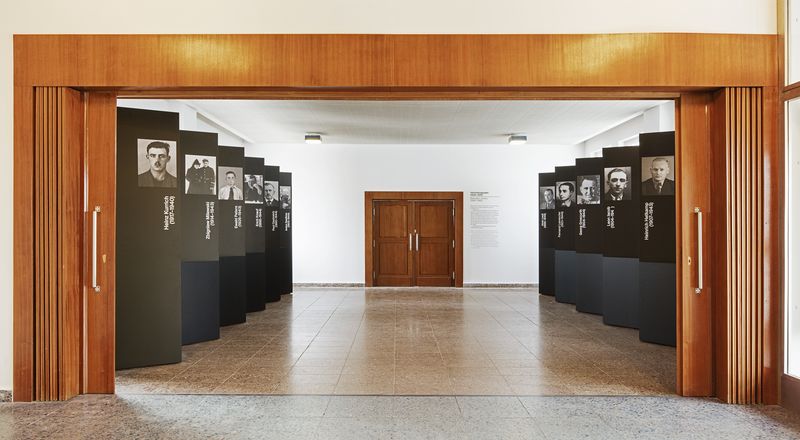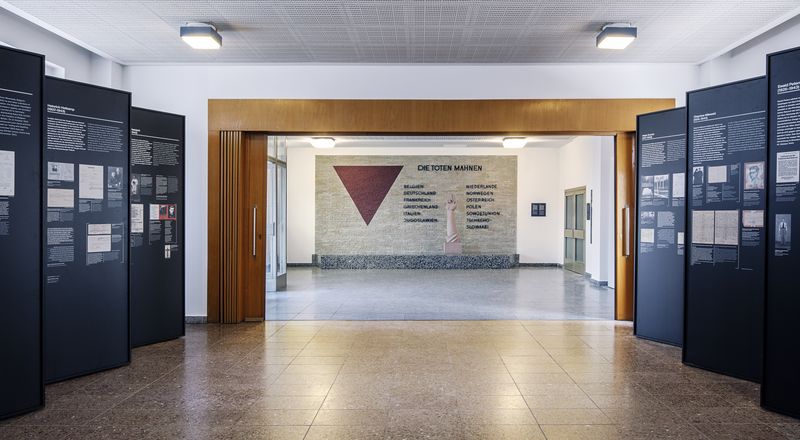1946–2018 History of the Memorial
A memorial culture for the memory of the victims of National Socialism in the Brandenburg-Görden Prison formed as early as 1946. About 300 former political prisoners and relatives of execution victims met on the first anniversary of the prison’s liberation. They remembered the dead at the former execution chamber in the prison and at the Marienberg cemetery, where the mortal remains of many of those executed were cremated and interred. A monument was dedicated on this site in 1947.
In 1949, Walter Hammer, a former prisoner, erected a memorial at the former execution garage; he reconstructed it as closely as possible to the original and secured the presentation of a guillotine. He fled to the West in 1950 because he was afraid that he would be imprisoned. He did not want to ascribe a prominent role to the Communists when representing resistance against the Nazis, which was criticized by influential functionaries of the Sociality Unity Party.
The memorial site at the former execution site was expanded and renovated on the 30th anniversary of the prison’s liberation by the Red Army in April 1975. The background for this development was apparently the fact that Erich Honecker, a former prisoner of the Brandenburg-Görden Prison (1937–1945), had become the General Secretary of the Central Committee of the Socialist Unity Party and therefore the GDR’s most powerful politician. The memorial on the Marienberg was built out into a location for mass demonstrations. On even years, memorial events were held here with up to 100,000 participants.
On January 1, 1988, the GDR government founded the “National Memorial Site Brandenburg” and planned a “Museum for the Anti-fascist Resistance Struggle” on the Marienberg. The most important message that visitors were supposed to receive was that the GDR was the realization of the goals held by the resistance fighters. The opening of a building with an exhibition space of 2,000 square meters was planned for the 45th anniversary of liberation in 1990.
After reunification, the “Memorials” Commission of Experts for the state of Brandenburg issued a plea in October 1991 to only retain the memorials spaces in the former prison. The “National Memorial Site Brandenburg” was dissolved in 1993 and integrated, with just one employee position, into the newly founded Brandenburg Memorials Foundation.
The permanent exhibition, “Up there in Görden. Brandenburg Prison during National Socialism (1933–1945) and in the GDR (1949–1990)”, was opened in April 2018. The exhibition site is the historically listed former Prison Director’s Residence.
The memorial site at the former execution site remains largely untouched in terms of its appearance. Twelve pillars present the biographies of execution victims, and a projection shows the names of all of those who were executed in Brandenburg-Görden.
